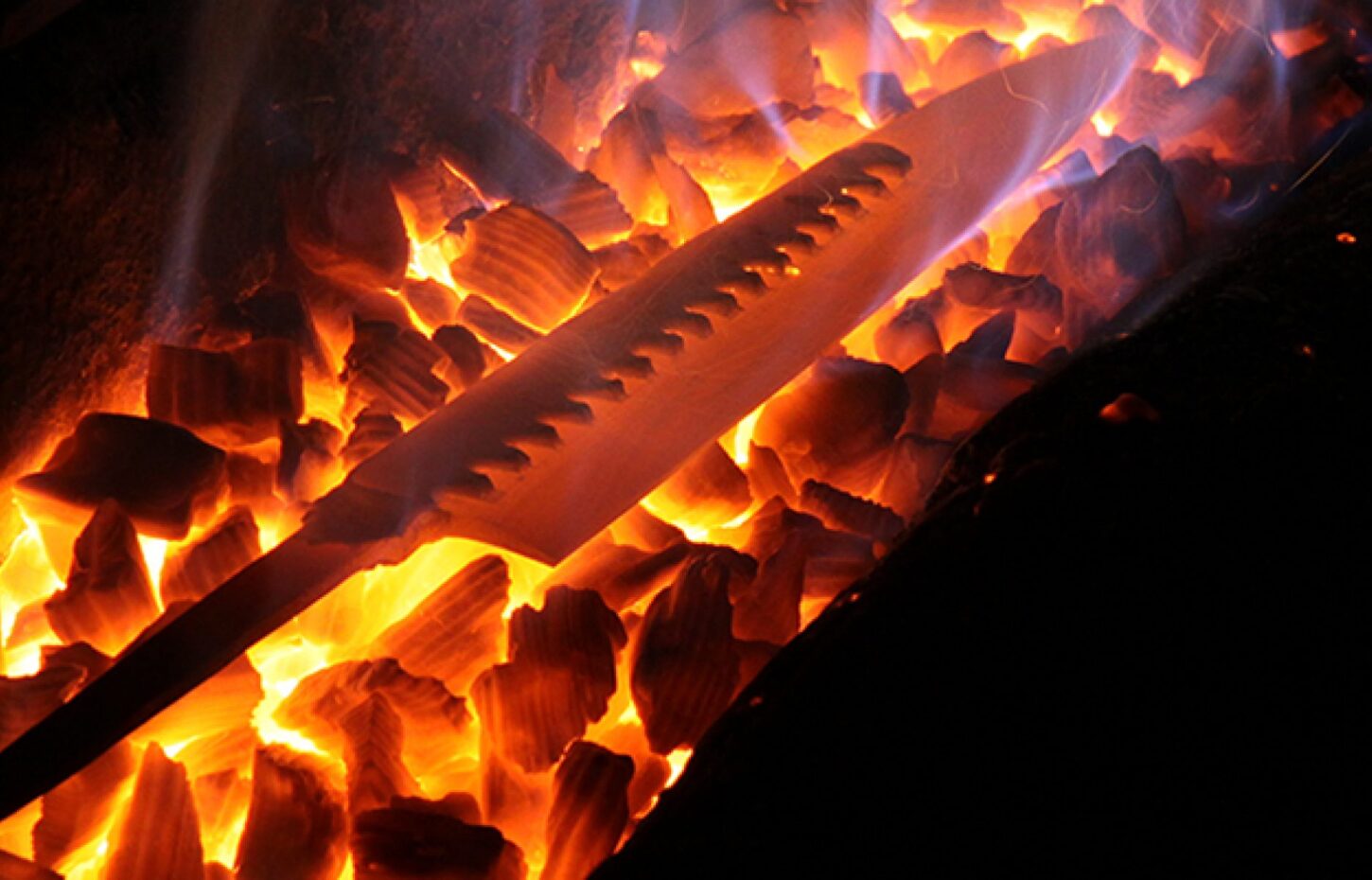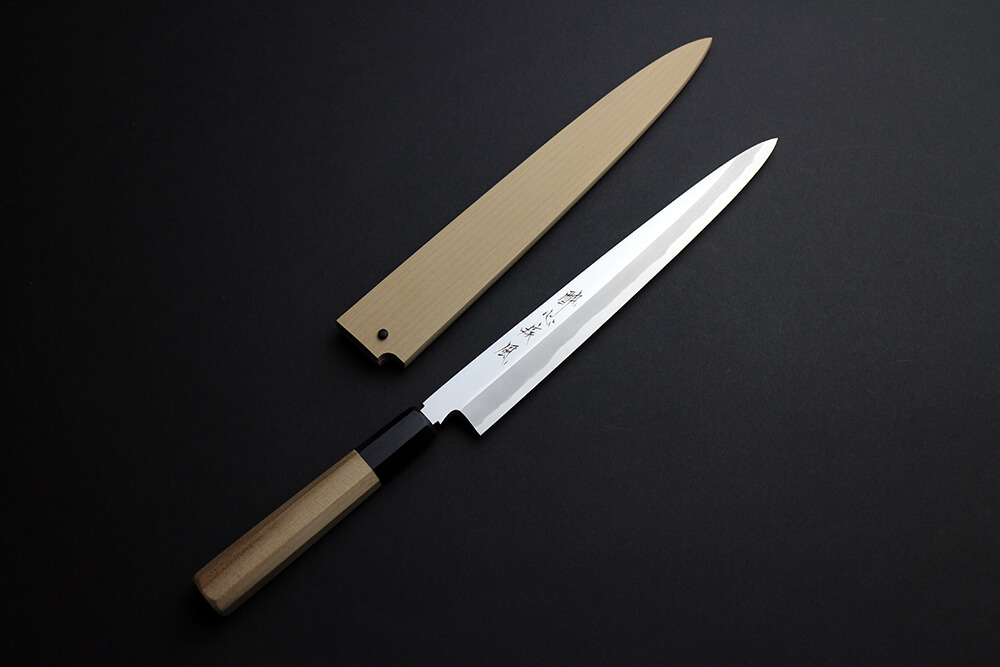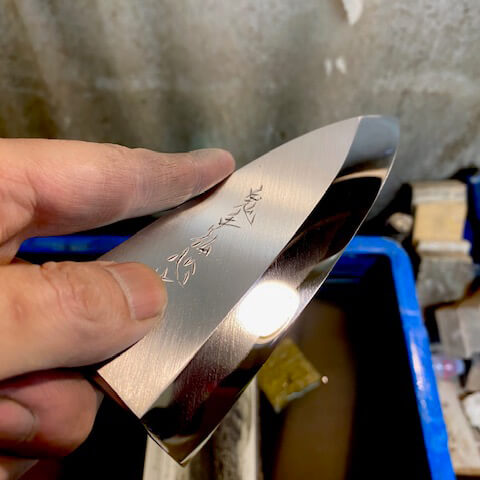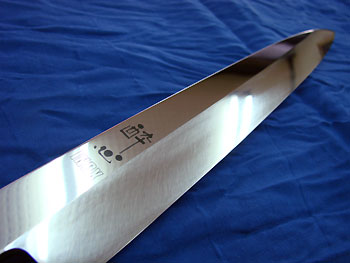Household Knives and Convex Edges
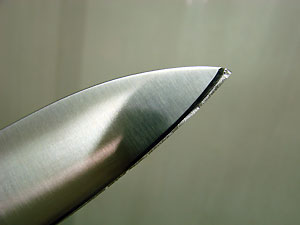
Today, I sharpened a household knife from the morning. It was an interesting Santoku knife with a sturdy-looking Shinogi line.

There’s a hollow in the Shinogi-like part of the knife, giving it a ‘Hi’ like the back of a traditional Japanese knife. I think this is a design feature to prevent food from sticking right after cutting. I’m really curious to see how this will change as I continue to sharpen it.
Although the photos only show the surface, the other side of the knife has the same ‘Hi.’ You can really sense the maker’s determination to ‘never let anything stick!’ But let’s put the blade’s structure aside for a moment and talk about the sharpening process. The steel was quite unusual – it felt both hard and sticky at the same time. It was labeled as stainless steel, but I couldn’t identify the exact type of steel. It was a strange material that produced burrs intermittently.
Knives like this one can be incredibly sharp if you find the right angle. Most affordable household knives sold in supermarkets are made with this kind of steel, and they are sharpened at precise angles by automatic machines to be durable and sharp. This might explain those oddly effective edges that seem mysterious.
However, if you can’t find that perfect angle, it’s difficult to get the knife as sharp as it was when you bought it. Even if you spend a lot of time and effort sharpening it, you might not get great results. Today, I was one of those people. I tried various techniques, and finally managed to get it to cut well. Achieving the convex edge was quite a challenge. Maybe it would have been easier to finish with a #1000 grit stone.
This experience reminded me that professional knives are designed to be easier to sharpen. Speaking of convex edges, I brought out a lot of examples for those who might be wondering what a convex edge is.
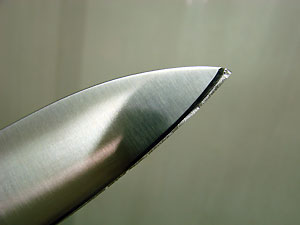
I’m showing the edge of the blade here. Can you see the thin, hair-like part that looks like a whale’s whisker? This is the convex edge. I exaggerated it a bit so it would show up clearly in the photo.
Please note, when you sharpen your knives, don’t make the convex edge this pronounced. Doing so will wear down your knife faster.
The knife in the photo is a SUISIN INOX Gyuto. Because of its pliability, the burrs don’t snap off easily and tend to cling to the edge. This pliability means it’s softer, but it also means the knife holds its edge well. Softer knives might not be as sharp as harder ones, but they have their advantages.
There are ways to sharpen soft knives to achieve an edge similar to that of hard knives. I’ll introduce those methods another time.
- 2010-01-21

